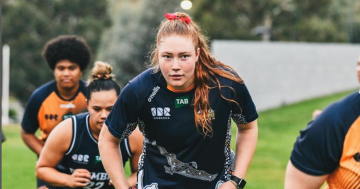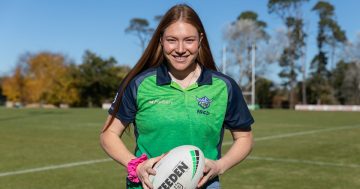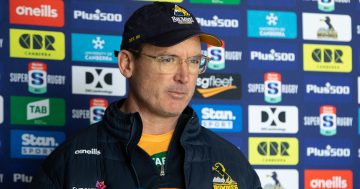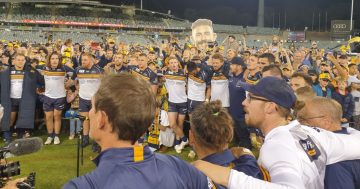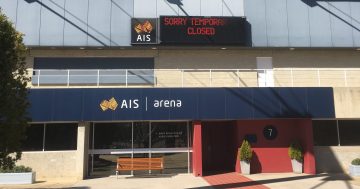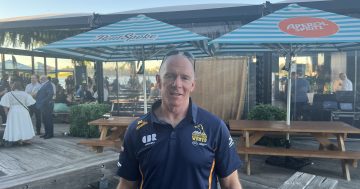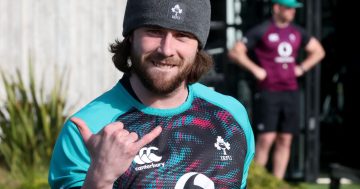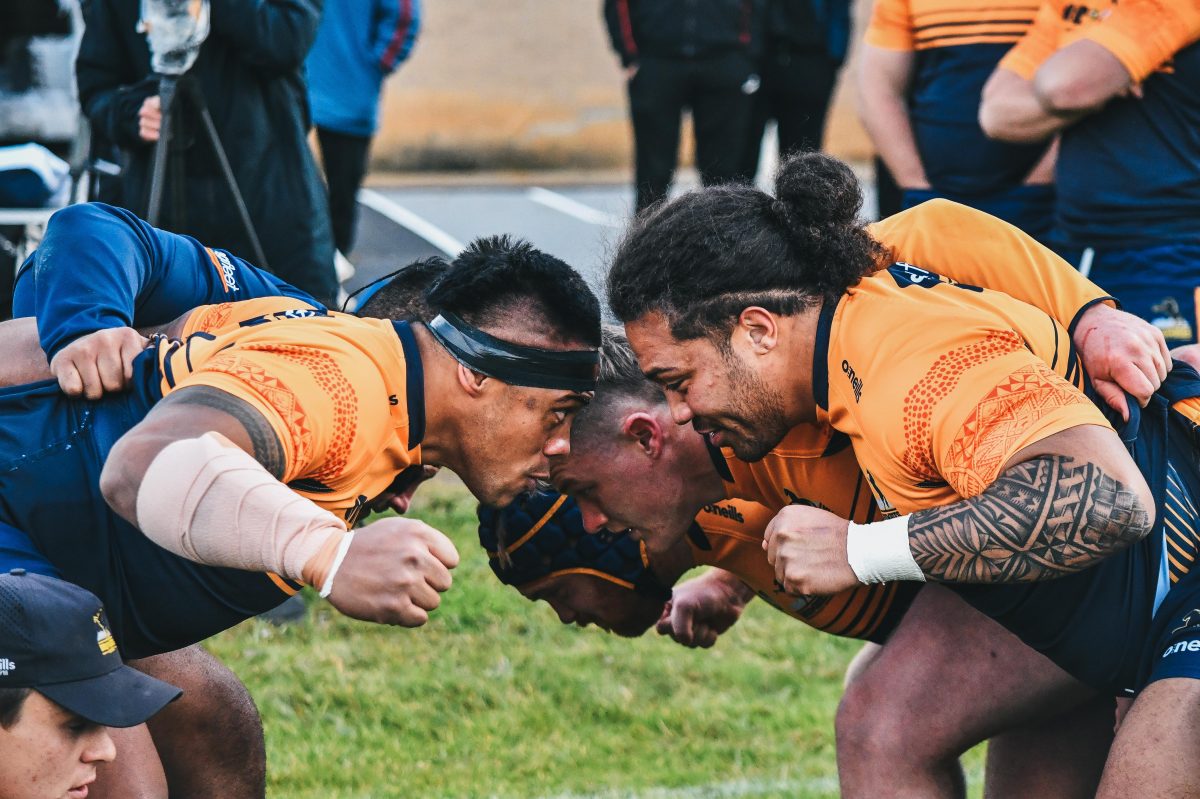
A UC PhD student is discovering what mouthguard telemetry can tell us about head injuries in contact sports. Photo: Brumbies Media.
Research currently being undertaken at the University of Canberra (UC) could improve outcomes for contact sportspeople who suffer concussions on the field.
Byron Field, who is completing his PhD on concussions at the UC Research Institute for Sport and Exercise (UCRISE), said it was all about striving for the best outcome when the inevitable happened.
“Concussion is always going to be a risk in contact sports,” he said.
“We want to be sure we’re helping players the best we can, and part of that is considering advances in technology that may help. My particular interest is advancing our ability to recognise head impacts.”
His latest project focuses on mouthguard technology that gathers information about head impacts on the field.
From 2011 to 2018 Byron worked as a sideline physiotherapist for the Brumbies, followed by a medical role at Bath Rugby in the English Premiership.
Dealing with concussions on a weekly basis, he saw first-hand the difficulties they caused players during and after their careers.
Concussion management technology company HITIQ approached Byron in Bath to assess the real-world accuracy of an instrumented mouthguard it had developed and validated in laboratory testing.
“It was the opportunity to look at some tech I didn’t know much about at the time,” he said.
Head impact telemetry – the process of recording and transmitting the readings of an instrument – had evolved into componentry that could be fitted in mouthguards and worn by players in non-helmeted sports. These provided new information about the acceleration and rotation of the head on impact.
The job was perfect for Byron, who had a clinical interest in concussion, and it became the precursor to his current work in head injury recognition.
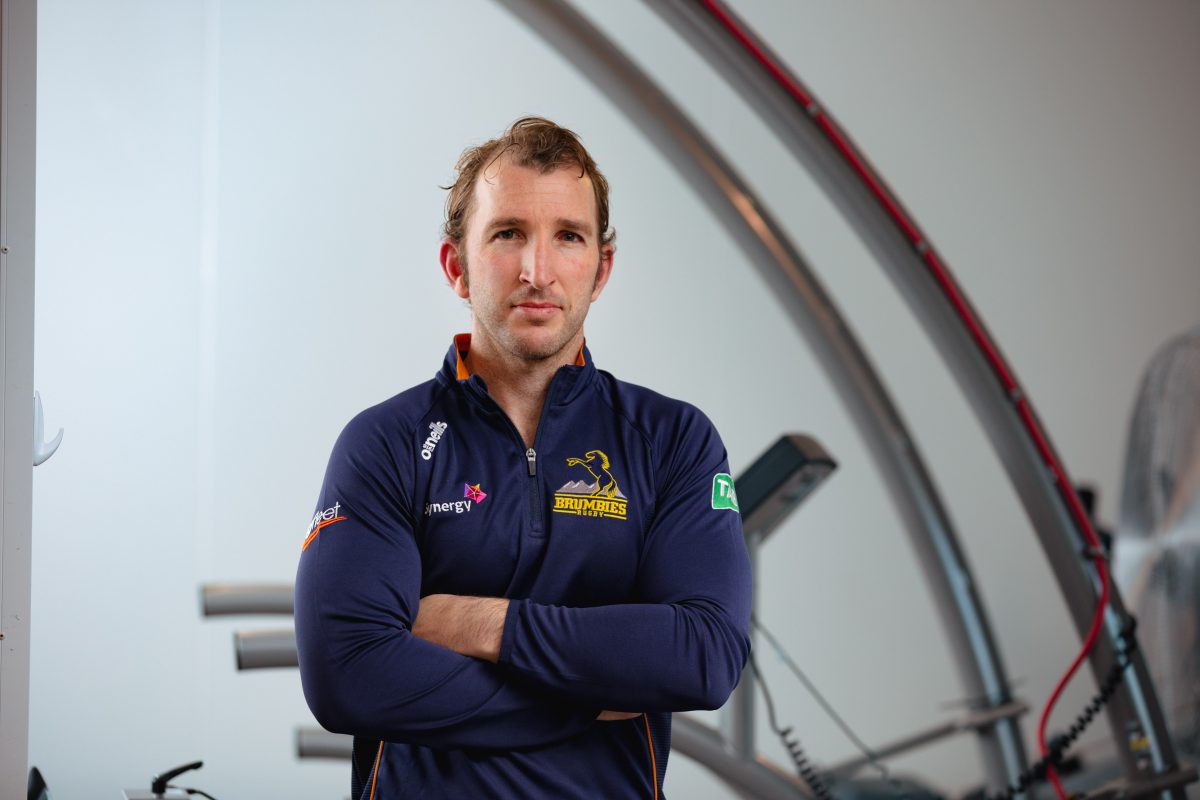
Byron Field has undertaken a PhD on concussions at UCRISE. Photo: Liv Cameron.
Byron said it wasn’t always evident when and how traumatic brain injuries occurred on the field.
“To have concussion there has to be an impact directly with the head or an inertial (whiplash) reaction,” he said.
“In rugby union, the most contact comes during a tackle, but there are many modalities by which contact and impact can occur.
“The purpose of my research is to gather information as to the magnitude, direction and frequency of impacts in rugby union and to try and quantify that. Instrumented mouthguards have the potential to provide those indicators.”
Mouthguards were an excellent candidate for telemetry for a number of reasons. Geographically they are positioned to gather information about head impact, but they’re also non-descript – a must for effective sports science research.
“Most players have one, they’re relatively straight-forward and it’s not onerous on the players to use it,” Byron said.
“The mouthguards are fitted with accelerometers and gyroscopes to gather the impact data. They’re custom-fitted – as any good mouthguard would be. Most players aren’t aware they’re there because they don’t feel any different to a normal mouthguard.”
Players use the mouthguards during training and in games. Byron then analyses the data they capture alongside video footage of the players in action, so he can compare impacts on film to the mouthguard readings.
“That’s called validation. You get a sense as to how accurate the instrument is.”
The mouthguard has already yielded some interesting data. Byron has learned impact magnitude appears to be higher in women’s games than in men’s.
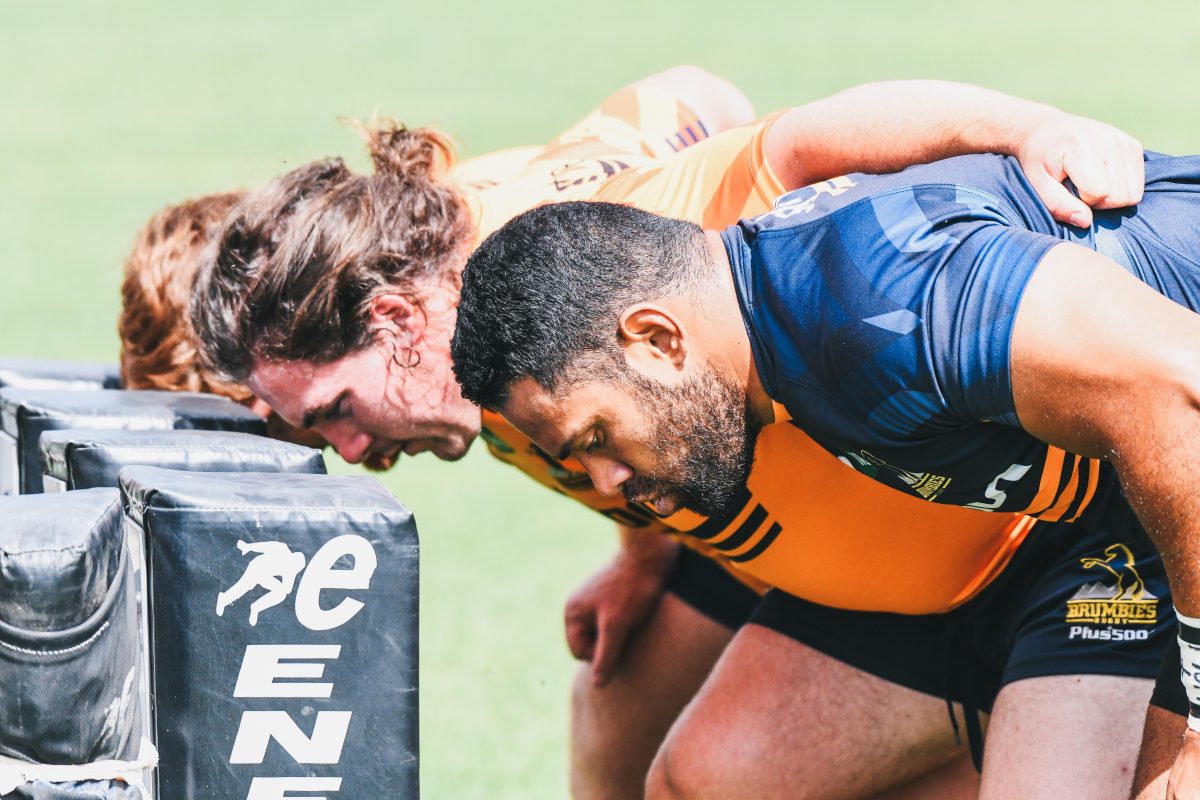
Byron’s mouthguards feel no different to normal mouthguards, but are fitted with gyroscopes to gather impact data. Photo: Brumbies Media.
Preliminary indications also show the mouthguards can be used to characterise specific game scenarios or situations that can lead to injury.
“We think most come from direct collisions (tackles) but there’s also evidence of relatively high incidents of head impacts during a ruck,” Byron said.
“Many of those impacts are not anticipated; players aren’t expecting them. And if you don’t know you’re going to be hit, you don’t brace, which may lead to higher impact.”
This marks Byron’s third endeavour at UC in the field of sports medicine, having completed his undergrad in sports science and psychology and a masters in physiotherapy about 20 years ago.
Recently returned to the Brumbies in a head of performance health role, he admits to being a lifer when it comes to player welfare.
“It’s got a hold on me,” he said.












